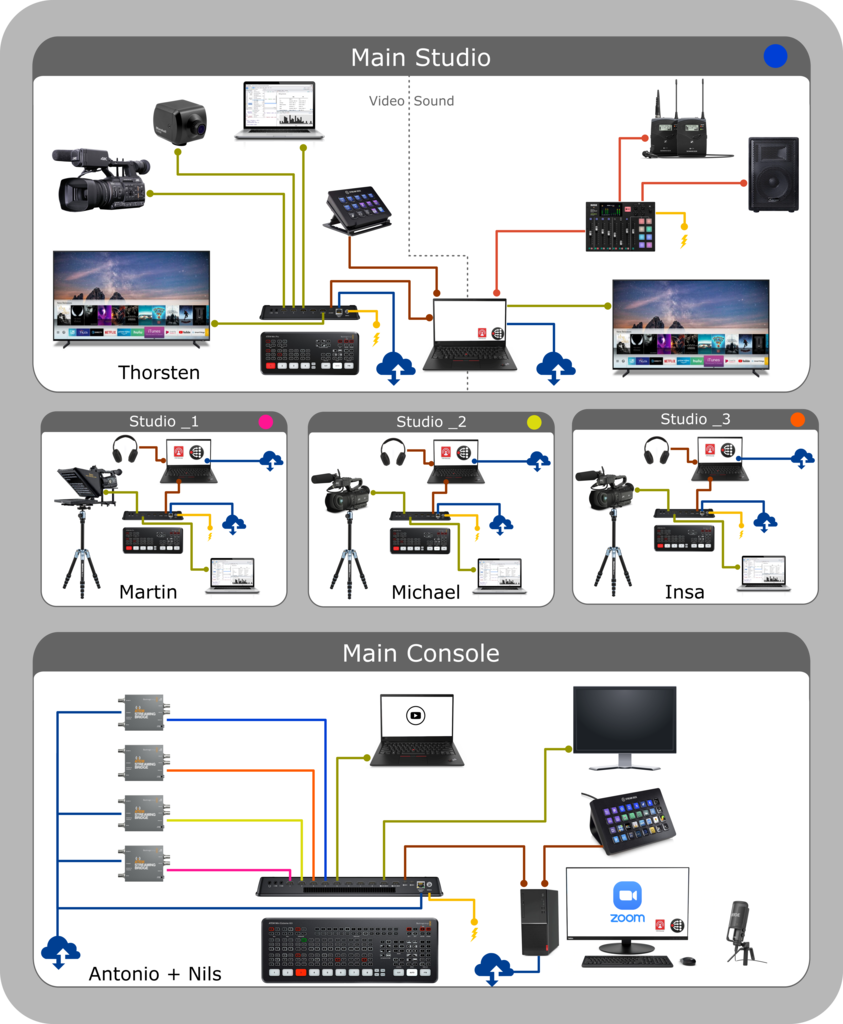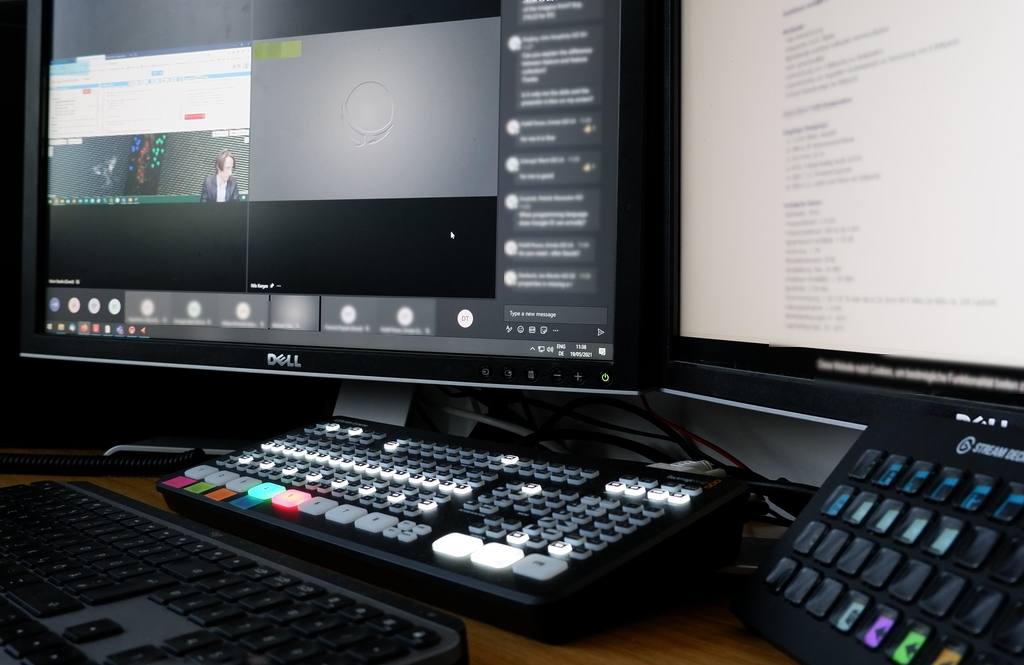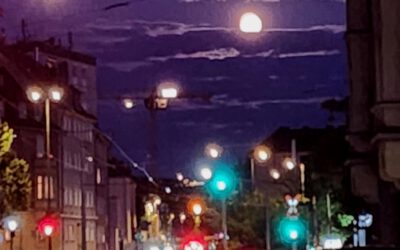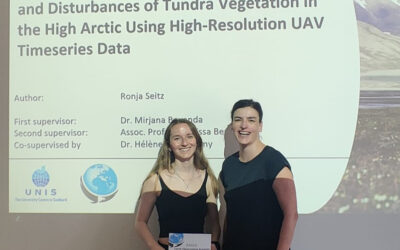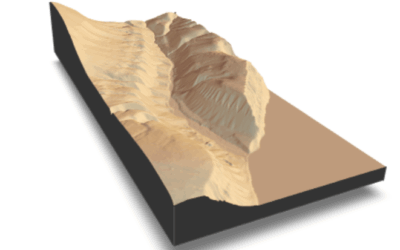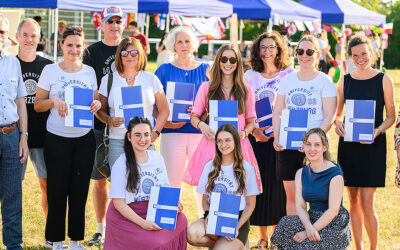We posted a while ago some images about our virtual teaching room and mentioned that we will provide briefly the general technical background setup:
we have four lecture rooms each with a broadcast camera (that can stream for 6 hours and more), microphones and green screens plus a stream deck to change certain settings like camera position, full screen view, lecture in image etc.. All these signals are send via an ATEM assemblage to a control room and then streamed to zoom, MS teams or any other service.
Of course the quick and easy setup got more complex than we thought, e.g. good lightning is crucial as well as good sound which is a task on its own. Moreover we experiences some camera failures before we settled on the broadcasting cameras because normal cameras even though they have streaming capabilities are not build to work for several hours in a row. And last but not least, the whole setup had to be as simple as possible to use for our staff members – at the end they just arrived with their laptop, connected to hdmi and started teaching, but it was quite a journey until we reached that level.
At the moment we are working on the internal communication system and we set up an intercom system for us outside the streaming system plus some acoustic improvements which we tackle with absorbers. Additionally we try to improve the eye-contact with our participants through using teleprompters but still need to work on that one. And last but not least, we are looking for a way to easily draw something and share it with our participants – of course that has to work with our system setup again which is not as easy as it might sound.
Despite all these challenges we are very happy that we had the chance (and reason) to set it up because we also learned a lot about software and technical approaches and it increased our engagement and fun for training again after such a long time with remote teaching. However, we are also very much looking forward to seeing all our students again in-person.
if you are interested to receive all the details about devices, code, setup etc. please feel free to contact us
